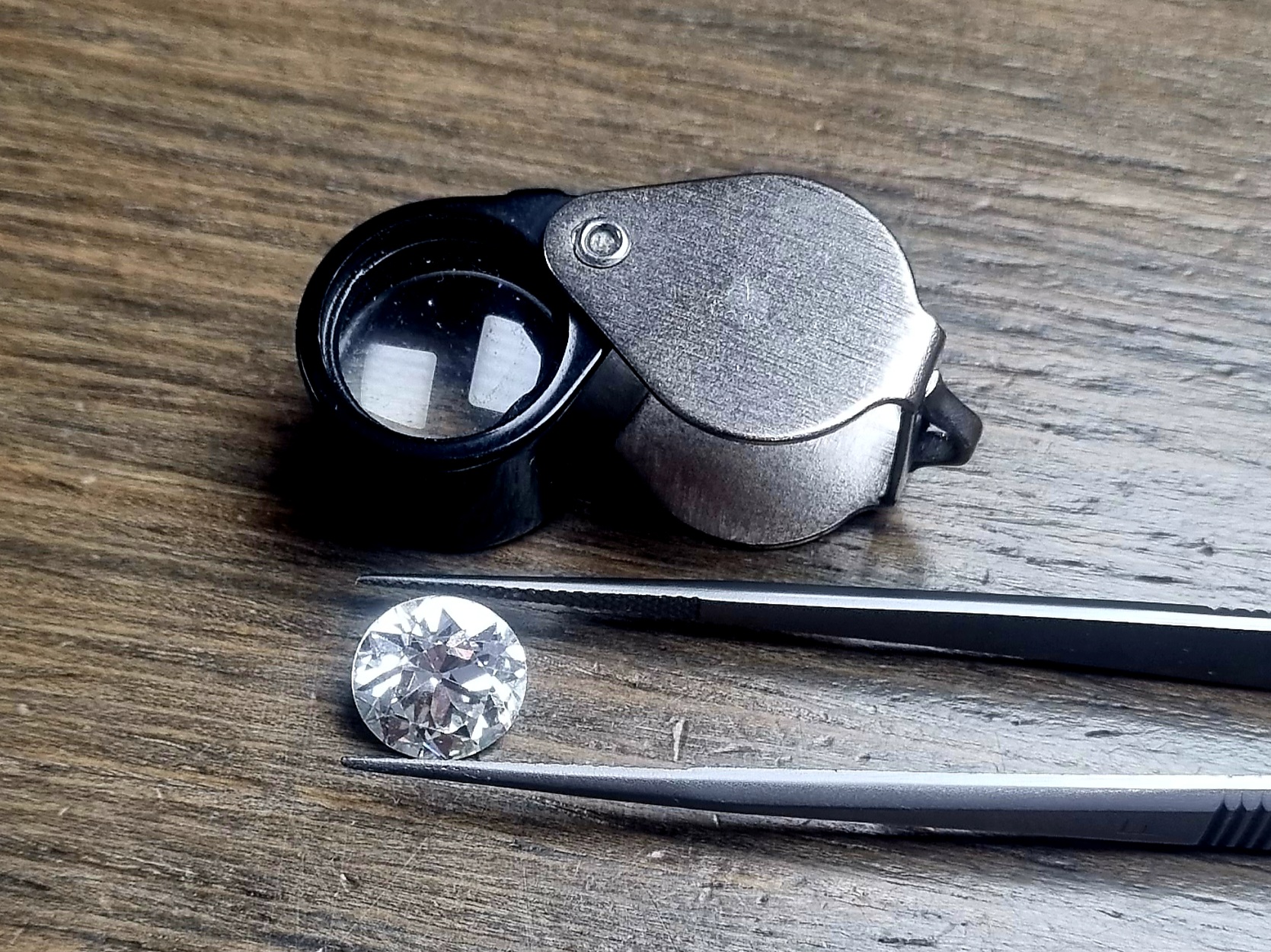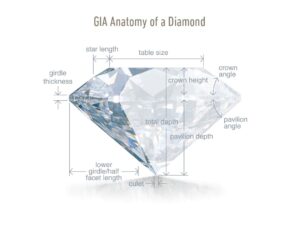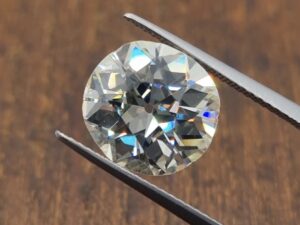This article aims to be a comprehensive guide on understanding the 4 C’s of diamonds. Whether you’re a collector, a prospective buyer, or simply an admirer of these sparkling gems, this article aims to provide you with a framework for how to judge and value a diamond. We’ll delve into the 4 C’s—Cut, Color, Clarity, and Carat Weight—each a crucial factor in determining a diamond’s quality and worth.
So, if you’re ready to become a more informed diamond enthusiast, read on. This guide is designed to be informative, straightforward, and focused on helping you understand the intricate world of diamonds, both modern and antique.
Table of Contents
Cut: The Geometry of Brilliance
When discussing the 4 C’s of diamonds, the cut is often considered the most vital aspect. The cut doesn’t refer to the diamond’s shape—like round, oval, or pear—but rather to the overall proportions, angles, and arrangement of its facets. These facets are the flat surfaces that are meticulously cut into the diamond, and their precise arrangement is what gives the diamond its unique sparkle and brilliance.
Grading the Cut
Most gemological labs, including the Gemological Institute of America (GIA) and HRD Antwerp, grade the cut of a diamond on a scale ranging from “Excellent” to “Poor.” This grading system serves as a standardized measure to evaluate the quality of the cut, thereby making it easier for consumers to understand what they are purchasing.
The Importance of Cut in the 4 C’s of Diamonds
The cut is paramount because it has the most significant impact on the way a diamond interacts with light. A well-cut diamond will reflect light internally from one facet to another and disperse it through the top of the stone, resulting in a captivating sparkle that is highly sought after.
Limitations of Cut Grading
It’s crucial to note that these cut grades are generally applicable only to Round Brilliant diamonds. For other shapes, also known as “fancy shapes,” the grading criteria can differ. The cut is especially important in Round Brilliant diamonds because these are cut with mathematical precision to maximize brilliance. In contrast, fancy shapes and antique cuts like the Old Mine Cut or Old European Cut are often guided more by the natural shape of the rough diamond and may not have a standardized cut grade.
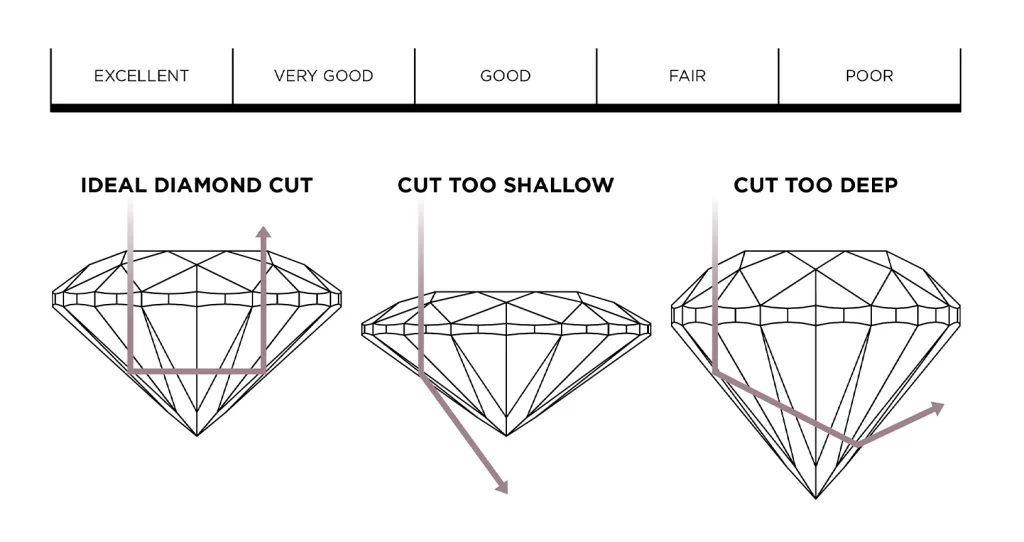
Color: Understanding the Grading Scale
When it comes to the 4 C’s of diamonds, color plays a pivotal role in determining the overall value and appeal of the stone. Contrary to popular belief, diamonds are not just colorless; they come in a wide array of shades.
The GIA Color Grading Scale
The Gemological Institute of America (GIA) has developed a standardized color grading scale that ranges from D to Z. A ‘D’ graded diamond is considered colorless, while a ‘Z’ graded diamond will have noticeable light yellow or brown hues. This scale is widely accepted and used as a benchmark for diamond color grading.
Fancy Colors: Beyond the Scale
In addition to the D-to-Z color scale, diamonds can also be found in what are known as “fancy colors.” These include shades like blue, green, intense yellow, and pink. Unlike diamonds in the D-to-Z range, fancy colored diamonds are evaluated based on the intensity of their color and are often highly prized for their unique and vibrant tones.

The Role of Color in the 4 C’s of Diamonds
The color of a diamond can significantly impact its value. While colorless diamonds are generally considered more valuable, the allure of fancy colored diamonds has been on the rise, often fetching higher prices at auctions and among collectors. Many people also appreciate the warmer tones of slightly yellowish or brown stones.
Limitations of Color Grading in the 4 C’s of Diamonds
While the GIA color grading scale provides a standardized measure for evaluating diamond color, it’s important to note that this system has its limitations. For instance, the scale is less effective for grading fancy colored diamonds, which are evaluated based on different criteria. Additionally, the grading process can be subjective and may vary slightly between different gemological labs.
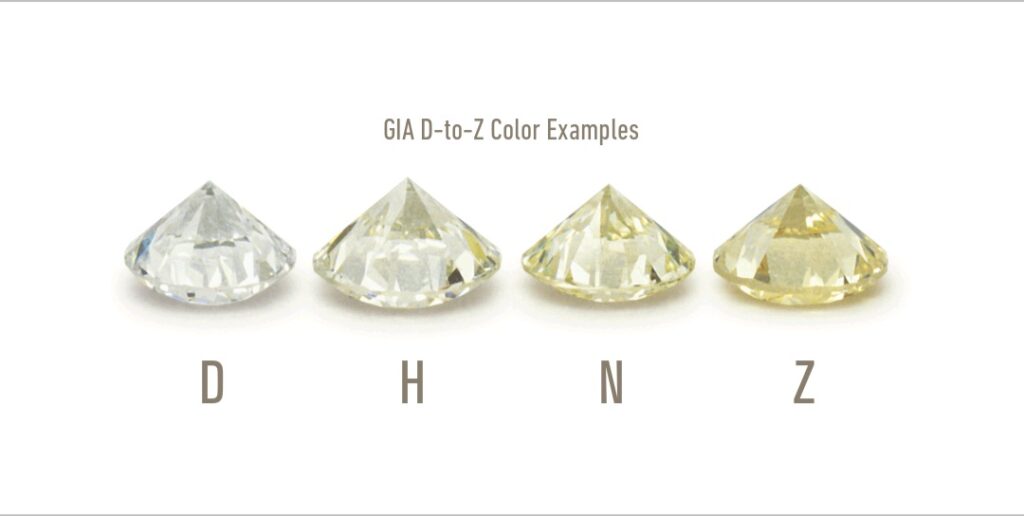
Clarity: Understanding Inclusions and Blemishes
Clarity is one of the essential aspects in the 4 C’s of diamonds, as it evaluates the presence of tiny imperfections, both on the surface and within the diamond. These imperfections are categorized into two types: blemishes, which are surface flaws, and inclusions, which are internal defects. While these imperfections are often microscopic and barely noticeable to the untrained eye, they play a crucial role in determining the diamond’s value.
Types of Clarity Grades
Understanding the grading scale for clarity is vital when considering the 4 C’s of diamonds. Here’s a more detailed breakdown:
- Flawless (FL): Under 10x magnification, no inclusions or blemishes are visible. This is the highest grade of clarity.
- Internally Flawless (IF): No internal inclusions are visible under 10x magnification, but some blemishes may be present.
- Very, Very Slightly Included (VVS1 and VVS2): Inclusions are extremely difficult to detect under 10x magnification. VVS1 is a slightly higher grade than VVS2.
- Very Slightly Included (VS1 and VS2): Inclusions are minor and range from difficult to somewhat easy to see under 10x magnification. VS1 is considered a higher grade than VS2.
- Slightly Included (SI1 and SI2): Inclusions are noticeable under 10x magnification and may be visible to the naked eye in certain cases.
- Included (I1, I2, and I3): Inclusions are visible without magnification and may affect the diamond’s transparency and brilliance.
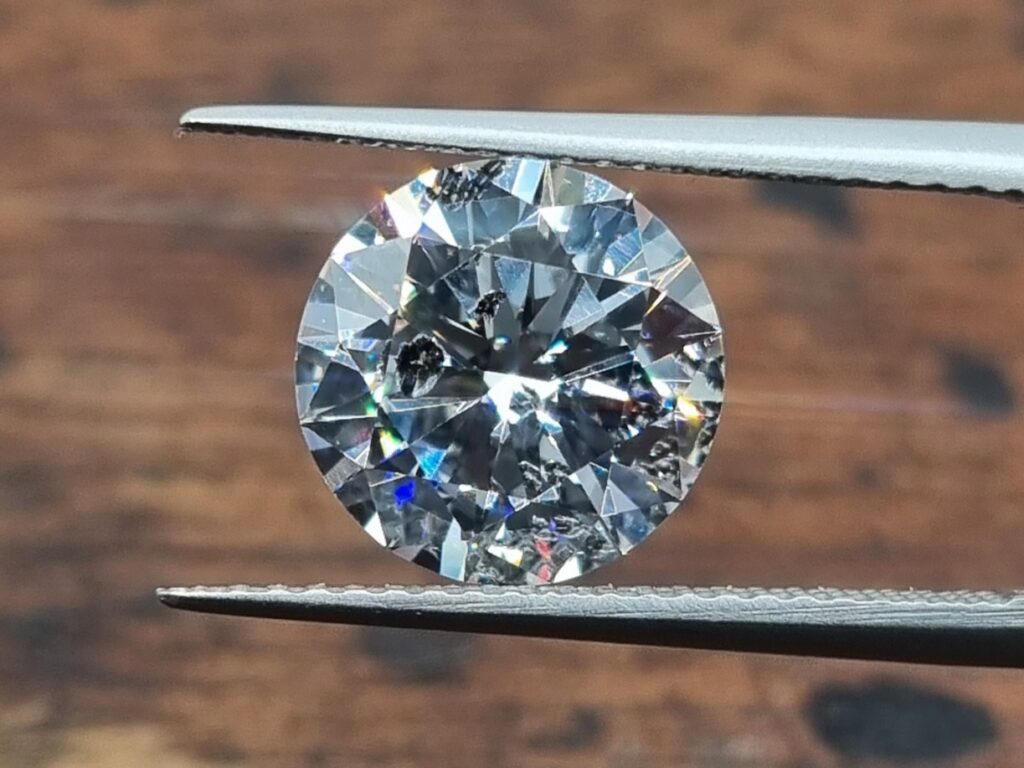
Internal vs. External Inclusions
It’s essential to differentiate between internal and external inclusions when evaluating clarity in the context of the 4 C’s of diamonds. Internal inclusions are often considered more significant because they can affect the diamond’s ability to refract and scatter light, thereby impacting its brilliance. On the other hand, external blemishes are generally less critical but can still influence the diamond’s overall appearance to varying degrees.
The Role of Clarity in the 4 C’s of Diamonds
Understanding the nuances of clarity grades can significantly aid you in making an informed decision when purchasing a diamond. Whether you’re interested in a modern or an antique cut, clarity remains a key factor that should not be overlooked.
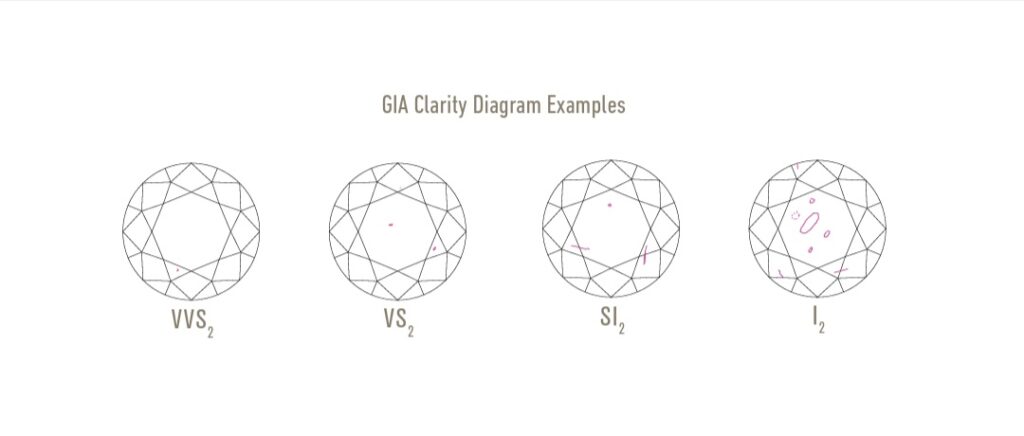
Carat Weight: The Diamond’s Size
When discussing the 4 C’s of diamonds, carat weight is often the most straightforward to grasp. It quantifies the size of the diamond, with one carat equaling 0.2 grams or 200 milligrams. The term “carat” originates from the carob seeds that were historically used as counterweights on balance scales to measure precious stones. These seeds have a uniform weight, making them a suitable choice for the task.
Rarity and Value
The rarity of larger diamonds significantly contributes to their value. Larger diamonds are less commonly found in nature, making them more expensive and highly sought-after. This is why you’ll often see a considerable price jump when comparing diamonds that are just a fraction of a carat apart in weight.
The Importance of Carat Weight in the 4 C’s of Diamonds
Carat weight is also an essential factor in the 4 C’s of diamonds because it directly influences the diamond’s overall appearance and price. However, it’s important to remember that a larger carat weight doesn’t always equate to a better diamond. The other C’s—cut, color, and clarity—play equally vital roles in determining a diamond’s quality and should not be overlooked.
Conclusion
Grasping the concept of the 4 C’s of diamonds is crucial for anyone aiming to buy or admire a diamond. While these four attributes offer a well-rounded framework for assessing a diamond’s quality, it’s important to remember that they serve as a general guide rather than a strict set of rules. This flexibility in evaluation becomes particularly relevant when you’re considering non-round or antique cut stones, where the traditional grading system may not fully encapsulate their unique beauty and worth.
If you’re interested in learning how these classic criteria apply to antique diamonds, take a look at my article, “The 4 C’s and Antique Diamonds.”
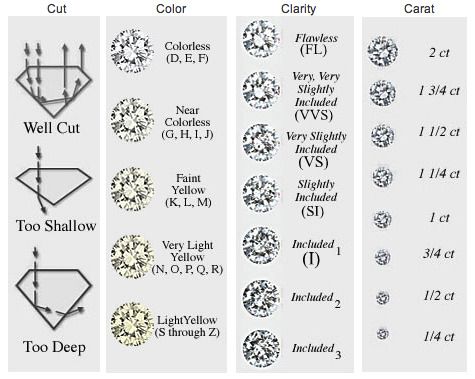
Additional Resources
- “The Diamond Handbook: A Practical Guide to Diamond Evaluation” by Renée Newman – This book offers practical advice on evaluating diamonds based on the 4 C’s.
- GIA (Gemological Institute of America) – The GIA website offers a wealth of information, including articles and courses that explore the 4 C’s of diamonds in detail. Visit GIA
- HRD Antwerp – Known for its diamond certification, HRD Antwerp provides valuable insights into diamond grading, including the 4 C’s. Visit HRD Antwerp
- “Diamonds: The Antoinette Matlins Buying Guide” by Antoinette Matlins – This book is designed to help consumers make informed choices when purchasing diamonds.
- “Jewelry & Gems: The Buying Guide” by Antoinette Matlins and Antonio C. Bonanno – Another excellent resource for anyone looking to understand the intricacies of diamonds, including the 4 C’s.
- Online Courses on Gemology – Websites like the International Gem Society offer courses that delve into the 4 C’s of diamonds and beyond. Visit International Gem Society


